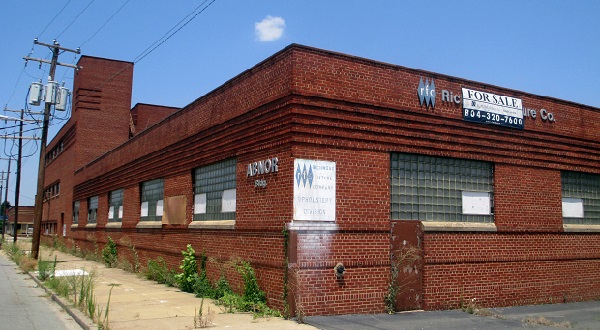The city has not quite slammed the door on windowless apartments.
The Richmond Planning Commission voted yesterday to grant a special-use permit for Thalhimer Realty Partners’ 90-unit apartment project at 3200 W. Clay St. in Scott’s Addition.
The development would incorporate 13 apartments that use skylights, above eye-level windows and glass boxes that lead to rooftop decks to channel light into the units.
Monday’s vote went against planning department staff’s recommendation that the project be denied for failing to comply with the commission’s 2-year-old stance against “windowless” apartments. The commission previously defined windowless units as those without eye-level windows cut out on a building’s exterior walls.
The decision followed an hour-long review of the plans.

Some of Thalhimer’s proposed apartments would use means other than traditional windows to get light.
“Every one of the 13 will be lit directly by an abundance of natural light and will have access to sufficient air for ventilation,” Matt Raggi, a Thalhimer vice president, said at Monday’s meeting. “We’re working in concert with (local architect) Walter Parks and have derived creative – and I’ll also mention expensive – ways to adequately circulate light and air throughout the units to ensure that they can compete in the marketplace over the long term.”
Of the 90 apartments planned for the property, 48 would have eye-level windows in the building’s exterior walls. Another 29 apartments would have eye-level windows facing a 7,000-square-foot open-air atrium in the center of the building, and 13 would be so-called windowless, as challenged by the planning department.
Thalhimer Realty Partners bought the Clay Street property from ABNOR Corp. last July. Developer Tom Wilkinson previously had the building under contract and had planned 139 apartments. Thalhimer trimmed the plan down to 101 apartments earlier this year to eliminate some windowless units. It then cut out 11 more units to incorporate the courtyard that would light the 29 windowed units on the building’s interior.
Thalhimer has said it can’t afford to eliminate any more units in order to bring the project entirely in line with planning’s windowless unit resolution. A potential lender has said a project with fewer units would require more equity, which Thalhimer President Drew Wiltshire said could be enough to kill the plan.
Wiltshire declined to say how much the apartments would cost to develop.
“The more cash we come up with, the lower that yield is, and it doesn’t meet the requirements we’re willing to live by based on the risk of the project,” Wiltshire said.
Windowless units have become an issue in recent years as state and federal historic tax credits have lured developers to convert large warehouses with vast interior space into apartments.
Without openings for standard street-level exterior windows, architects have gotten creative by adding atriums, skylights and other features to funnel natural light into interior apartments.
The planning commission took a stand against windowless units two summers ago by passing a resolution stating “windowless dwelling units should be avoided as a general premise.”
That stance cited potential health risks tied to a deprivation of natural light including depression, weight gain and sleep disorders.
That resolution also said that windowless units may be approved if the National Park Service and Virginia Department of Historic Resources determine the units must be permitted to preserve a historic building and meet other conditions.
On Thalhimer’s Clay Street project, architect Walter Parks designed glass “popups,” which are floorless glass boxes that would bring light into four of the apartments from the ceiling. Eight more of the project’s windowless units would have about six-foot-tall windows cut above eye-level, and one apartment would have a skylight.
Planning department staff and commission members lauded Thalhimer’s work to reduce windowless units. Thalhimer’s project as planned includes a rooftop pool, fitness center, business center, clubhouse and a 67-space parking garage.
“The one windowless unit to me, I’m not as concerned about,” commission member Doug Cole said at Monday’s meeting. “Taking the parking lot from Scott’s Addition out and moving it into a building just makes Scott’s Addition such a vastly better neighborhood, so I think that the trade-off is more than worth it.”
Planning commission chairman Rodney Poole was the sole dissenter in Monday’s 5-1 vote.
“I believe the commission’s resolution is important and needs to be adhered to, but I do not want to in any way imply that this applicant has not made valiant efforts to meet the commission’s resolution,” Poole said. “They have, but I don’t think they’ve succeeded.”
At Monday’s meeting, the planning commission also approved a special-use permit that will allow Broad Street restaurant and music venue the Camel to operate seven days a week until 2 a.m. for a year.
A unanimous vote approved the rezoning of a Main Street property to make way for 71 new Shockoe Bottom apartments.
All of the commission’s decisions are advisory, and the cases will go to city council for final approval next week.
The city has not quite slammed the door on windowless apartments.
The Richmond Planning Commission voted yesterday to grant a special-use permit for Thalhimer Realty Partners’ 90-unit apartment project at 3200 W. Clay St. in Scott’s Addition.
The development would incorporate 13 apartments that use skylights, above eye-level windows and glass boxes that lead to rooftop decks to channel light into the units.
Monday’s vote went against planning department staff’s recommendation that the project be denied for failing to comply with the commission’s 2-year-old stance against “windowless” apartments. The commission previously defined windowless units as those without eye-level windows cut out on a building’s exterior walls.
The decision followed an hour-long review of the plans.

Some of Thalhimer’s proposed apartments would use means other than traditional windows to get light.
“Every one of the 13 will be lit directly by an abundance of natural light and will have access to sufficient air for ventilation,” Matt Raggi, a Thalhimer vice president, said at Monday’s meeting. “We’re working in concert with (local architect) Walter Parks and have derived creative – and I’ll also mention expensive – ways to adequately circulate light and air throughout the units to ensure that they can compete in the marketplace over the long term.”
Of the 90 apartments planned for the property, 48 would have eye-level windows in the building’s exterior walls. Another 29 apartments would have eye-level windows facing a 7,000-square-foot open-air atrium in the center of the building, and 13 would be so-called windowless, as challenged by the planning department.
Thalhimer Realty Partners bought the Clay Street property from ABNOR Corp. last July. Developer Tom Wilkinson previously had the building under contract and had planned 139 apartments. Thalhimer trimmed the plan down to 101 apartments earlier this year to eliminate some windowless units. It then cut out 11 more units to incorporate the courtyard that would light the 29 windowed units on the building’s interior.
Thalhimer has said it can’t afford to eliminate any more units in order to bring the project entirely in line with planning’s windowless unit resolution. A potential lender has said a project with fewer units would require more equity, which Thalhimer President Drew Wiltshire said could be enough to kill the plan.
Wiltshire declined to say how much the apartments would cost to develop.
“The more cash we come up with, the lower that yield is, and it doesn’t meet the requirements we’re willing to live by based on the risk of the project,” Wiltshire said.
Windowless units have become an issue in recent years as state and federal historic tax credits have lured developers to convert large warehouses with vast interior space into apartments.
Without openings for standard street-level exterior windows, architects have gotten creative by adding atriums, skylights and other features to funnel natural light into interior apartments.
The planning commission took a stand against windowless units two summers ago by passing a resolution stating “windowless dwelling units should be avoided as a general premise.”
That stance cited potential health risks tied to a deprivation of natural light including depression, weight gain and sleep disorders.
That resolution also said that windowless units may be approved if the National Park Service and Virginia Department of Historic Resources determine the units must be permitted to preserve a historic building and meet other conditions.
On Thalhimer’s Clay Street project, architect Walter Parks designed glass “popups,” which are floorless glass boxes that would bring light into four of the apartments from the ceiling. Eight more of the project’s windowless units would have about six-foot-tall windows cut above eye-level, and one apartment would have a skylight.
Planning department staff and commission members lauded Thalhimer’s work to reduce windowless units. Thalhimer’s project as planned includes a rooftop pool, fitness center, business center, clubhouse and a 67-space parking garage.
“The one windowless unit to me, I’m not as concerned about,” commission member Doug Cole said at Monday’s meeting. “Taking the parking lot from Scott’s Addition out and moving it into a building just makes Scott’s Addition such a vastly better neighborhood, so I think that the trade-off is more than worth it.”
Planning commission chairman Rodney Poole was the sole dissenter in Monday’s 5-1 vote.
“I believe the commission’s resolution is important and needs to be adhered to, but I do not want to in any way imply that this applicant has not made valiant efforts to meet the commission’s resolution,” Poole said. “They have, but I don’t think they’ve succeeded.”
At Monday’s meeting, the planning commission also approved a special-use permit that will allow Broad Street restaurant and music venue the Camel to operate seven days a week until 2 a.m. for a year.
A unanimous vote approved the rezoning of a Main Street property to make way for 71 new Shockoe Bottom apartments.
All of the commission’s decisions are advisory, and the cases will go to city council for final approval next week.




